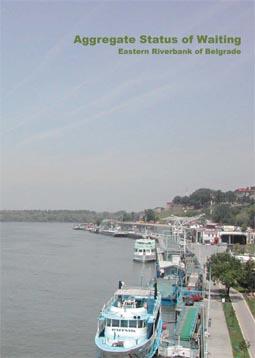Aggregate States of Waiting - Eastern Riverbank of Belgrade

Students: Corinne Lehner, Maja Trudel
Location: Group work in Belgrade
Date: July, 2006
Type: Research project, student work, Sava amphitheatre
This case study looks at the large stretches of riverbanks of Sava and Danube in Belgrade. The riverbanks are dominated by a juxtaposition of infrastructures, urban-residual programs and different marginal, ‘shadow’ occupations. They lie in-between the city and the rivers, this condition talking about historical borders that used to run along the rivers but also about future potentials this space.
In the gravity f the city, on the riverbanks, lays the 'Sava Amphitheatre', generally thought to be the most interesting area of Belgrade. It is seen as an epicenter of the future transformations of the city. It is also one of eternal myths of Belgrade architecture; generations of architects have dreamt of 'Sava Amphitheatre' as a place where ‘city comes to its rivers’.
In near future Belgrade’s Central Railway station will be moved to a new location freeing up some 80 ha of high-value land in the very center of the city. With that move, the project of 'Sava Amphitheatre' might become a reality.
The two banks of the river are however completely different in nature and will also be investigated separately.
The East bank of Sava river, on the side of Old Belgrade, is largely dominated by the old railway station and railway tracks. It is linked to the bank of Danube, an important European river traffic corridor connecting the North Sea with the Black Sea, called the Corridor VII. There, a sequence of different programs stretches between the two ports of Belgrade, with the Fortress, a sports centre, a small marina and some redundant but architecturally striking industrial terrains.
Recently, the Serbian Republic government sold the ports of Belgrade to a Luxemburg capital investment fund. The decision was based on the analysis that there was no traffic on the Danube - a situation that was caused by 3 bridges lying in the water. Today, this has been resolved and shipping is possible on the Danube again, connecting Belgrade to a large European water infrastructure, even if there is not much traffic yet. This triggers a public debate about how to develop the two ports.
Download the Book PDF

